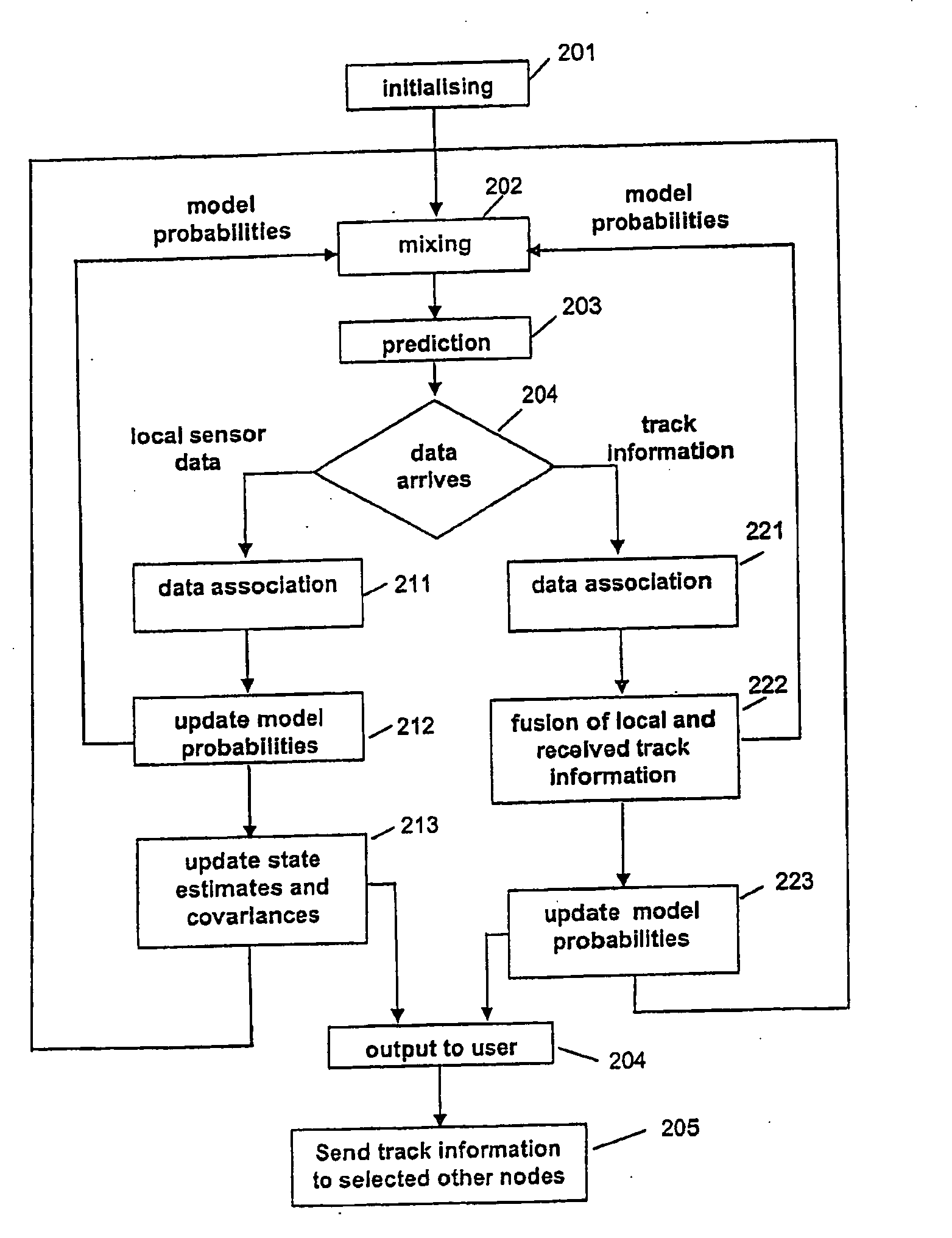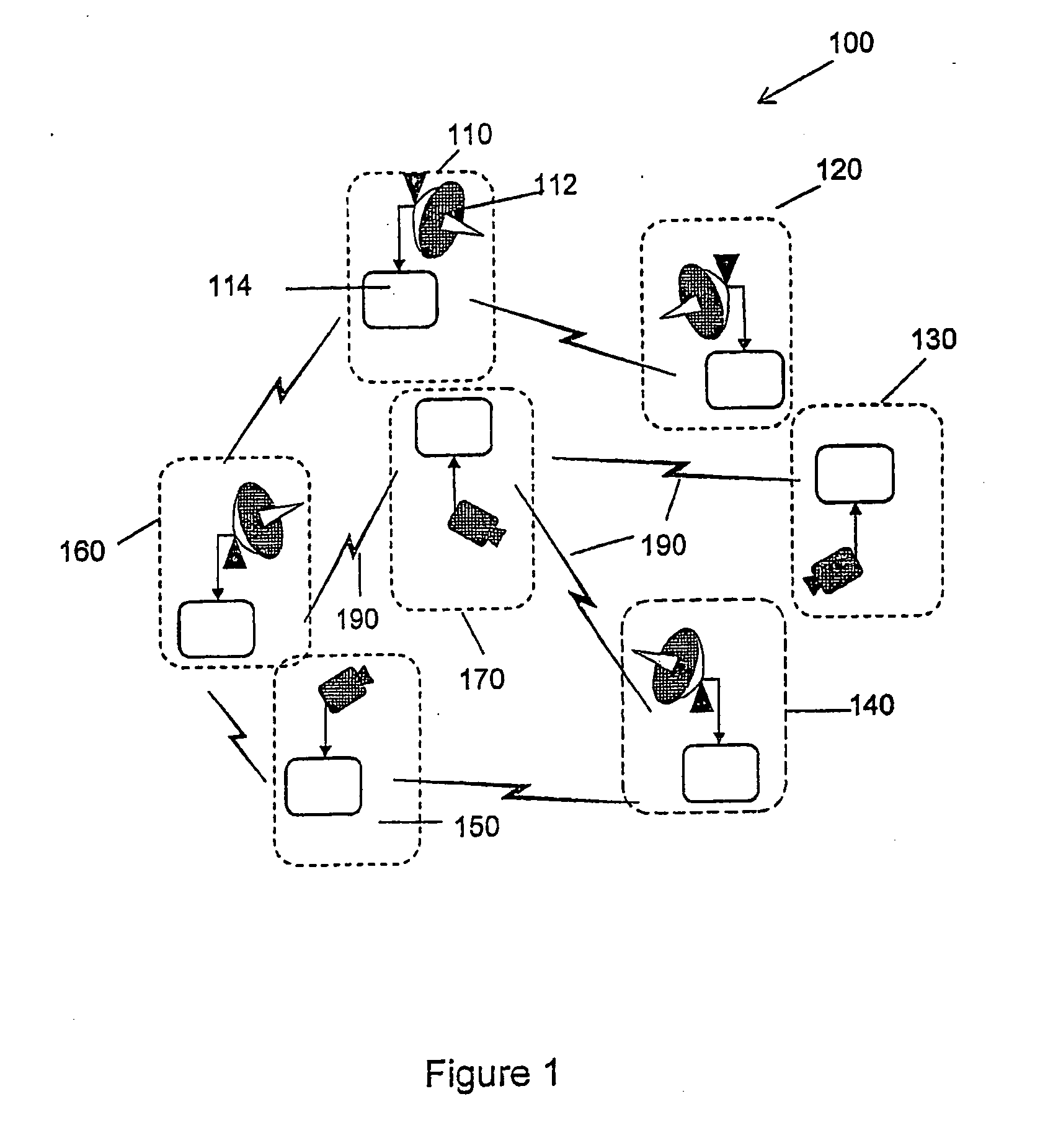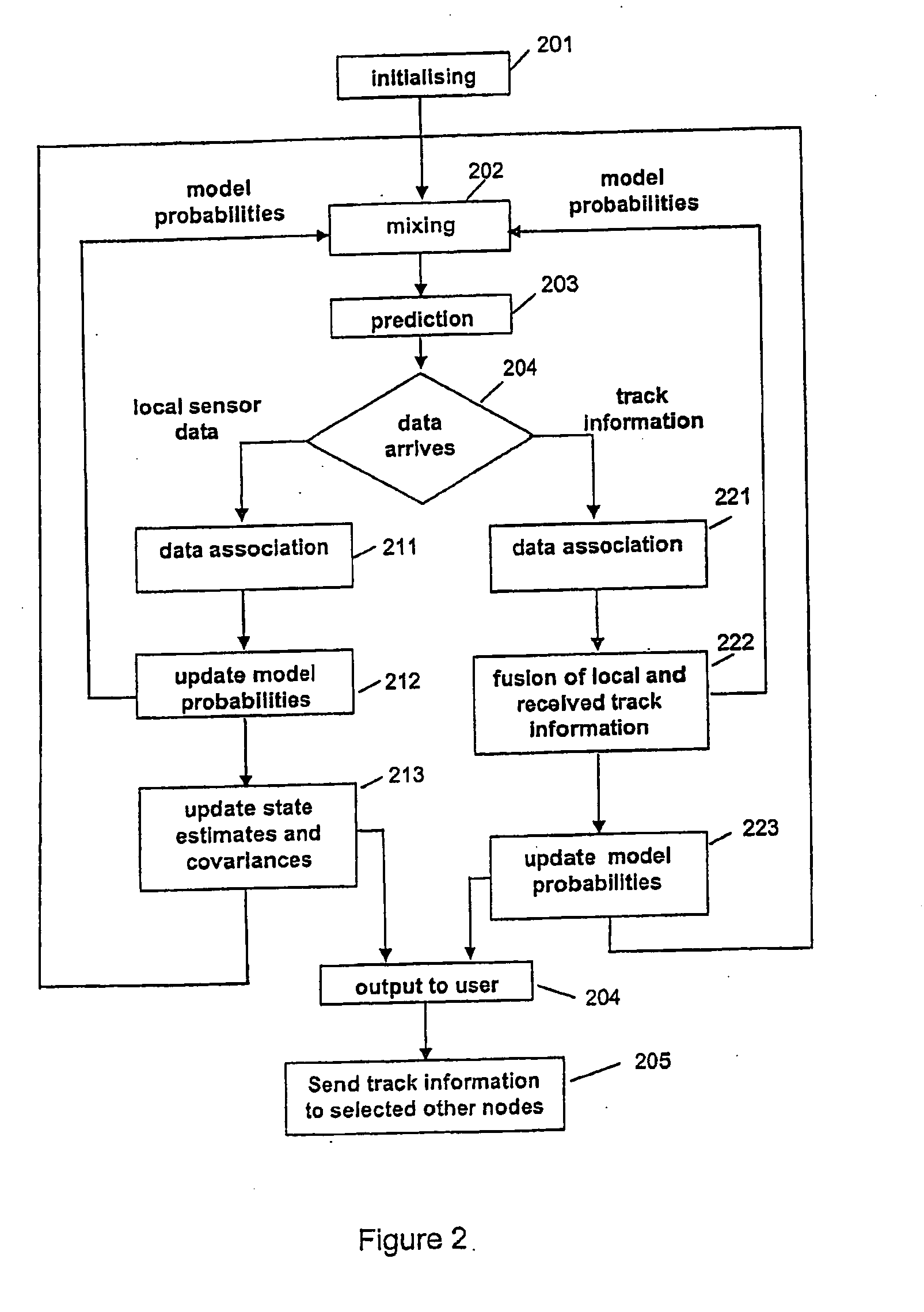Target tracking
a target and tracking technology, applied in the field of target tracking, can solve the problems of neither centralised nor distributed architectures are scaleable, neither centralised nor distributed architectures are effective tracking targets, and the loss of central processing facilities in both directions, so as to achieve scalable and robustness, the effect of effective tracking a manoeuvring targ
- Summary
- Abstract
- Description
- Claims
- Application Information
AI Technical Summary
Benefits of technology
Problems solved by technology
Method used
Image
Examples
Embodiment Construction
[0041]A decentralised network, common to all the embodiments described hereinbelow, is illustrated in FIG. 1. Network 100 comprises nodes 110, 120, 130, 140, 150, 160 and 170. Each of the nodes comprises processing and communication means, and a sensor. For example, node 110 comprises sensor 112, and processing and communication means 114. Sensor 112 may, for example, be a radar sensor. The components of the remaining nodes have not been labelled for the sake of clarity, but it will be understood that nodes, 120, 130, 140, 150, 160 and 170 may comprise sensors of the same type as node 110, or of a different type. When the network is in use to track a target, each node outputs track information comprising details of the target's state. This information may include details of target position, velocity, other attributes—such as target type—or a mixture of such details. Individual nodes, that comprise means to perform these functions, are enclosed in FIG. 1 by broken lines.
[0042]The net...
PUM
 Login to View More
Login to View More Abstract
Description
Claims
Application Information
 Login to View More
Login to View More - R&D
- Intellectual Property
- Life Sciences
- Materials
- Tech Scout
- Unparalleled Data Quality
- Higher Quality Content
- 60% Fewer Hallucinations
Browse by: Latest US Patents, China's latest patents, Technical Efficacy Thesaurus, Application Domain, Technology Topic, Popular Technical Reports.
© 2025 PatSnap. All rights reserved.Legal|Privacy policy|Modern Slavery Act Transparency Statement|Sitemap|About US| Contact US: help@patsnap.com



